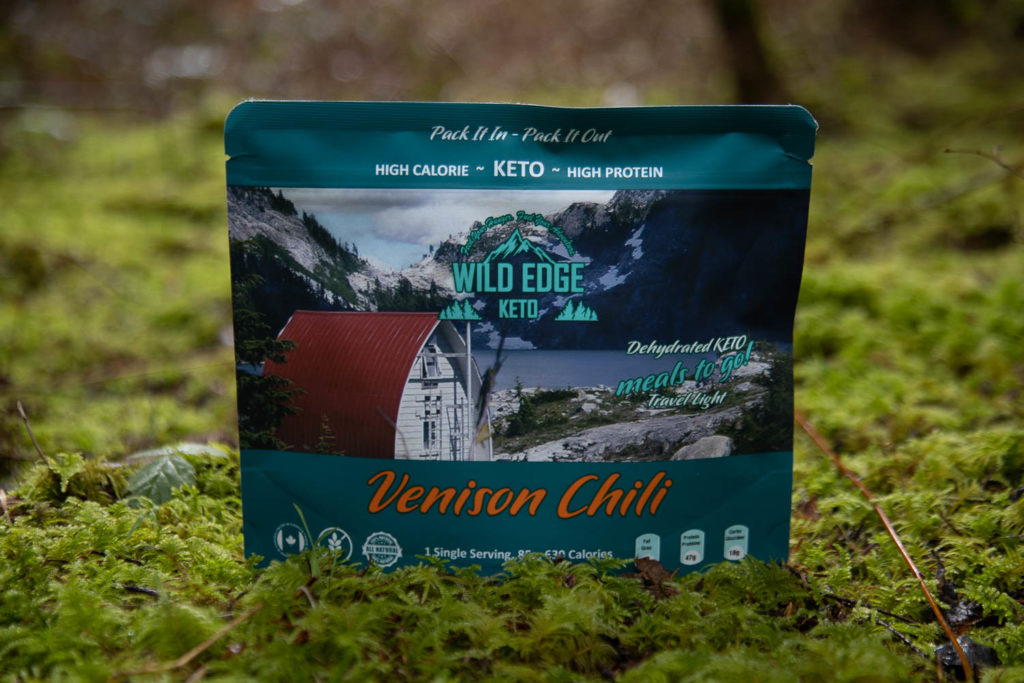My first backpacking trips were filled with awe and excitement to get off grid and see places I had never been to before. They were also filled with dread with what my stomach would do with the backpacking food I was eating. High in preservatives and off the charts with salt, my stomach preferred the food from home.
A few years ago I switched to mostly paleo and gluten free and this really limited my options with backpacking food. Most were packed with whatever cheap fillers they could dehydrate. They were more rice, potatoes and preservatives than real meat and vegetables.
Some backpacking food companies offered gluten free options but I couldn’t find any that offered high-quality, real food you could take on the trail.
Scrolling through Facebook one day a friend (thanks Janet!) had posted about Wild Edge Keto backpacking food. I was very interested.
What is Wild Edge Keto Backpacking Food?
Wild Edge Keto is a company based on the west coast of British Columbia, Canada that makes backpacking food that is keto, gluten-free, and paleo.
You don’t have to know what each of those things are or be required to eat that kind of diet. All together they just mean the Wild Edge food is made from sustainably raised, locally sourced meat, vegetables with plenty of fat included in each meal. All the meat is grass-fed and grass-finished. High quality food. Exactly what you need on the trail.
The meals are delicious, lighter per calorie than carb-heavy meals, and don’t give you gut rot by the end of the trip.
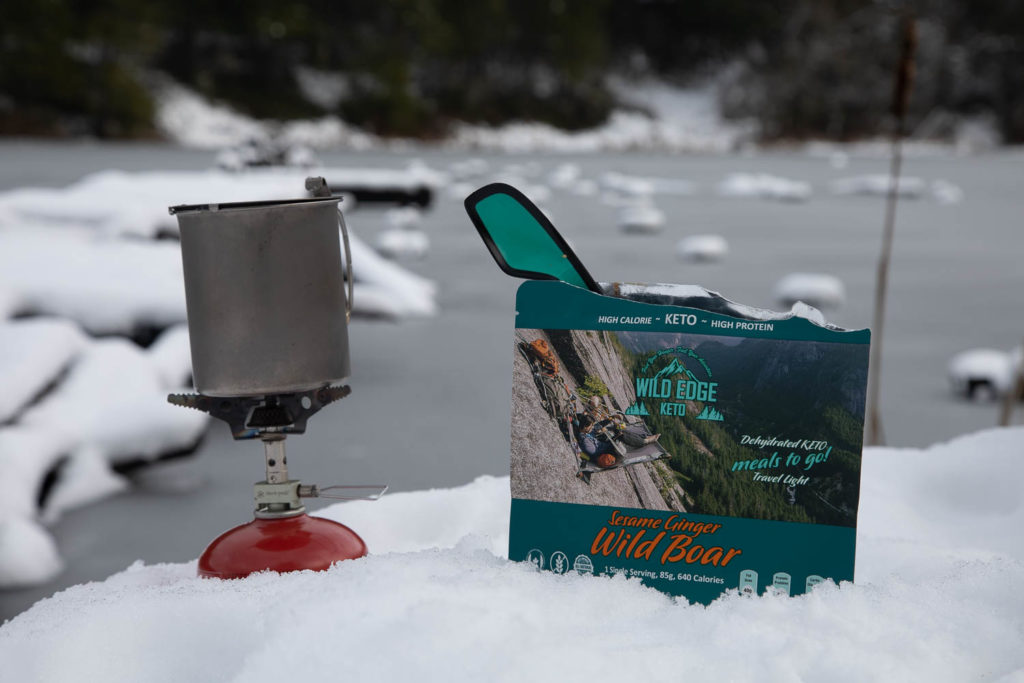
The Wild Edge Keto Meals
Founder Christie Dionne has spent a fair share of her life outside. She grew up on the coast of BC scuba diving and alpine climbing. She’s developed big wall climbs around Powell River, wrote Powell River Rocks, and helped make the Arc’teryx climbing film, On The Verge.
Wild Edge Meals are easy to make just like the regular backpacking meals. Add boiling water, wait 12-15 minutes and eat!
They have 4 meals so far that you can buy separately for $15 each. The Weekend Sampler pack has has 1 of each you can try. The Traverse pack has 7 meals, the Adventure Pack has 10, and the Expedition has 12. It’s always nice to mix and match on the trail so you don’t get bored of what you’re eating.
They also just got the Canadian Food Inspection Agency certification to ship to all provinces and territories.
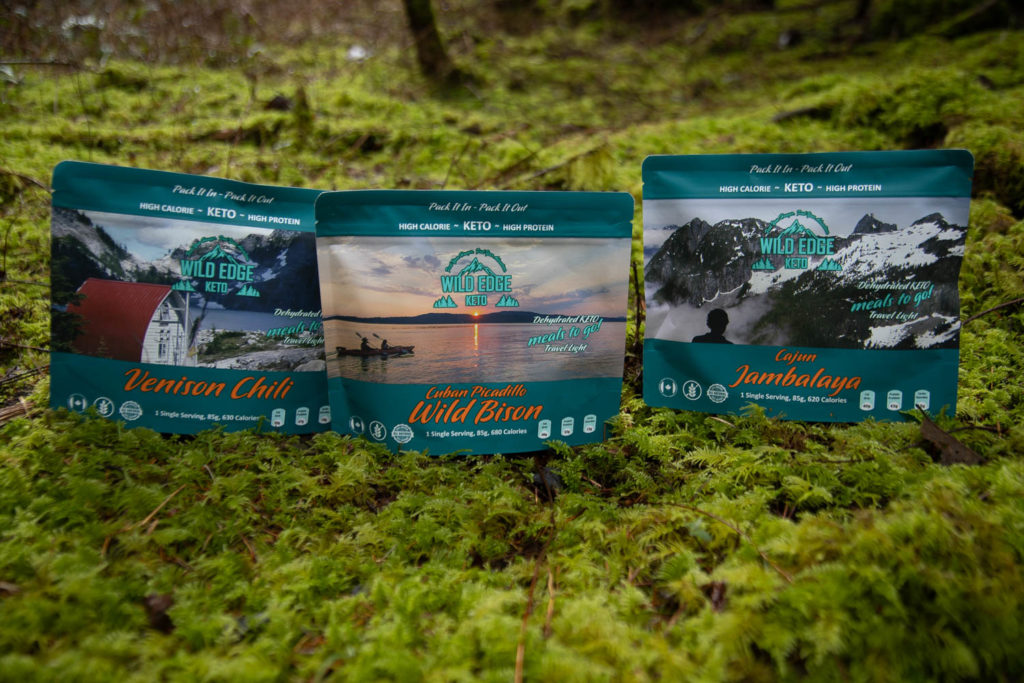
What is Keto?
Keto, or a ketogenic diet, is a family of diets high in fat and low in carbs. There are a few methods of doing it each with their different benefits. For most folks in daily life this can mean weight loss and reducing risk of diabetes, Alzheimer’s, epilepsy and cancer.
For athletes, being fat-adapted and often going into Ketosis, can mean less of a bonk on long hikes or climbs.
Our bodies burn sugar for fuel if it’s available. Most people only have about 1000-2000 calories of sugar, or glycogen, available. It’s burnt quickly and needs to be replaced if that’s how you are fueling a run, hike or climb. All the gels and energy drinks work on refueling sugar. Most of it’s just sugar.
For long distance athletes (anything longer than a sprint) this doesn’t make as much sense. We need to go farther and can’t be bonking every time we run out of sugar. Fortunately we have 10s of thousands of calories on our body in fat. If we regularly eat high fat and are fat-adapted (our body burning fat for fuel instead of sugar) then we can go for days using fat for fuel.
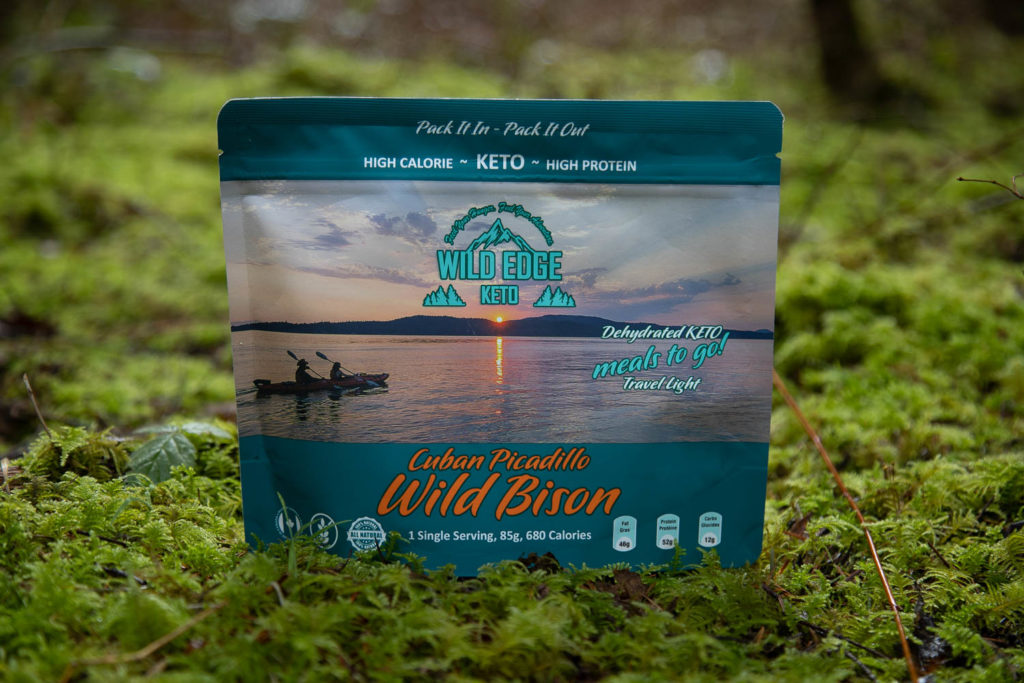
Is Keto lighter on the trail?
Having a higher percentage of fat in your food actually makes it lighter by calorie on the trail.
On their Keto page, Wild Edge lays out 6 days of meals comparing carb-heavy meals with fat heavy meals. An example 3000 calorie/day for 6 days in the mountains could save you 2.5 pounds of food going high fat, medium protein and low carb.
If you do need those carbs or want to make them a bit bigger to share, it’s easy to add some instant rice or noodles.
What I Like about the Wild Edge Meals
Food is delicious and calorically dense
The calories from fat are more dense and lighter to carry that the carby fluff in most backpacking meals. The Wild Edge Meals are packed with fat so you get all the calories you need for long days on the trail or the rock. The Cuban Picadillo Wild Bison has 46 grams of fat, 52 grams of protein and 18 grams of carbs. Delicious.
I can only take higher quality
Shorter, wider food bags
Finally! Someone who has had their hands covered in food from the tall food bags. Even having a specialized long spoon for backpacking meals doesn’t prevent you from getting some sort of sauce all over your hand.
The Wild Edge bags are shorter and wider, easier to eat out of than the tall bags that everyone else makes.
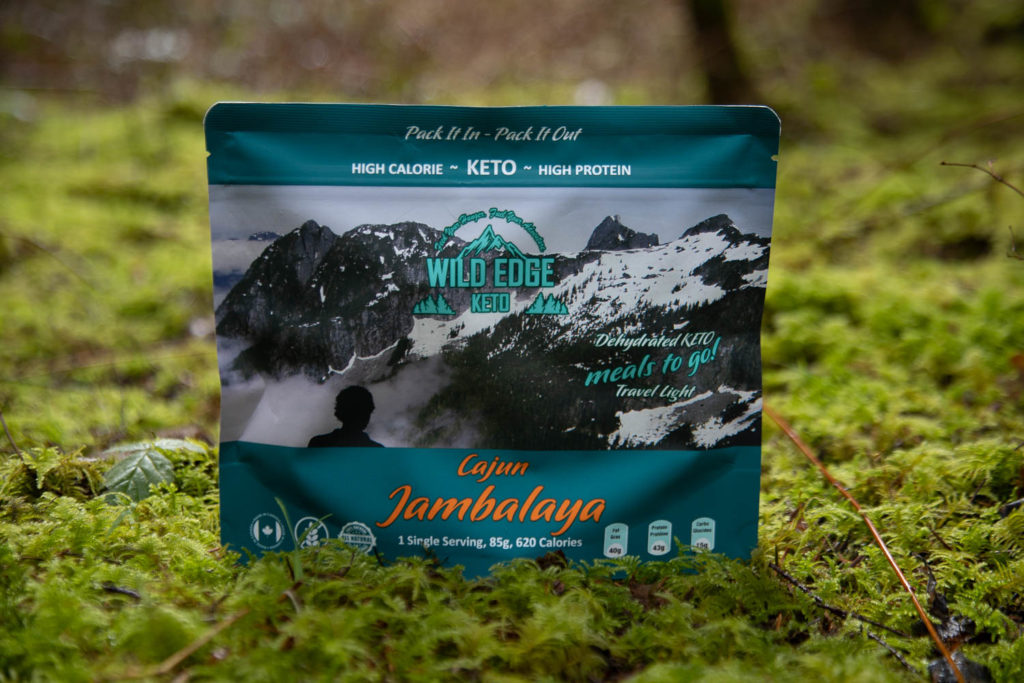
What could be improved
The price is more expensive that other standard dehydrated bag meals but you get what you pay for. If you are looking for lower quality, less expensive meals, Backpackers Pantry, AlpineAire and Mountain House offer those. You can also make them yourself. I would think that doing any sort of meal with grass-fed, grass-finished meat (if you can even find that in your town) will be expensive even if you do it yourself!
My stomach can deal with a few of those other brands if I’m careful. The gluten-free AlpineAire meals have been pretty good. They are certainly carb heavy, full of rice, and black beans in some cases.
Should you buy Wild Edge Backpacking Meals?
Absolutely. They are the tastiest, real food in a backpacking meal I’ve ever tried. The high fat fuels your big adventures with the best fuel we can use without bonking from too many carbs. If you need a bigger meal or want to ease off carbs, just add extra rice and noodles. The flavours are amazing and the wide, short bags make it easy to eat without covering your hands in food.
I’m looking forward to a few more options to pick from from Wild Edge to try out but in the meantime will be eating as many of them as I can get my hands on.
